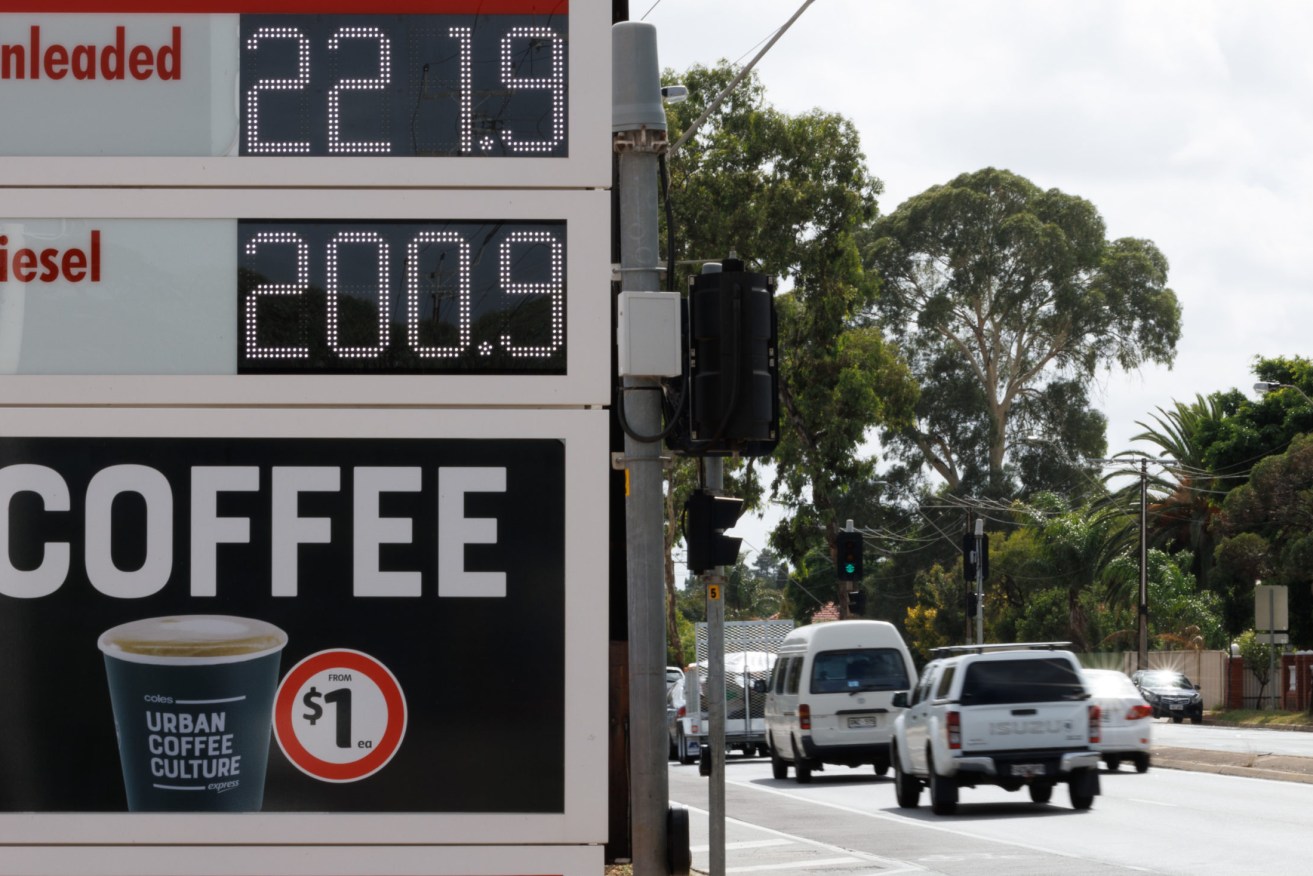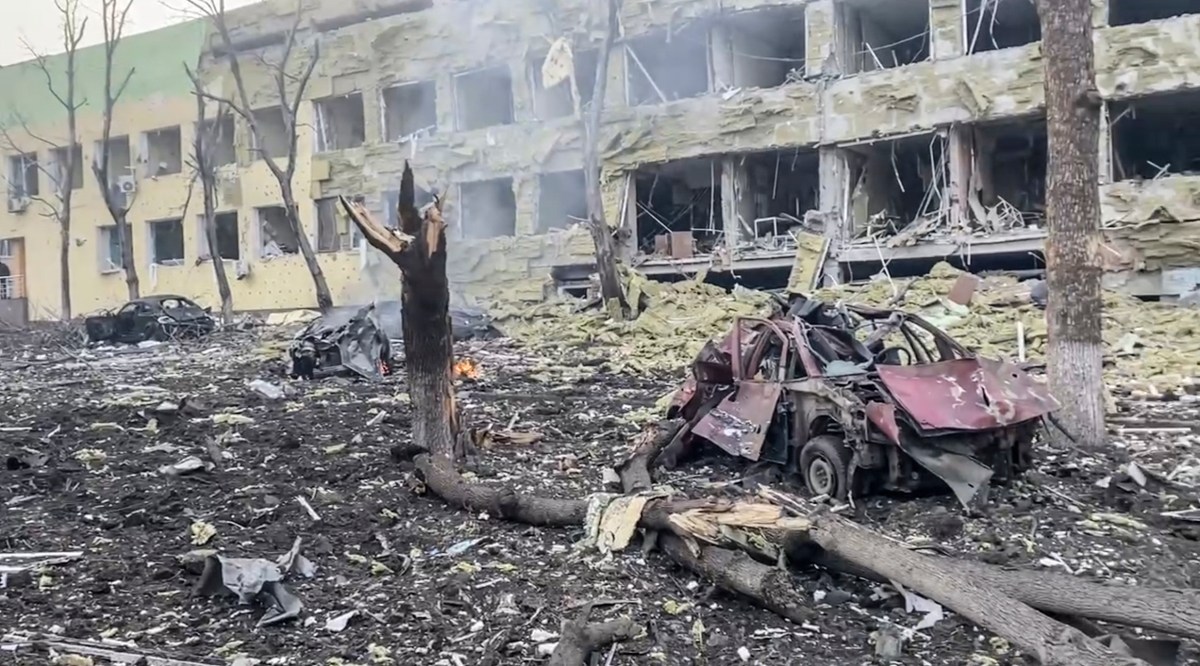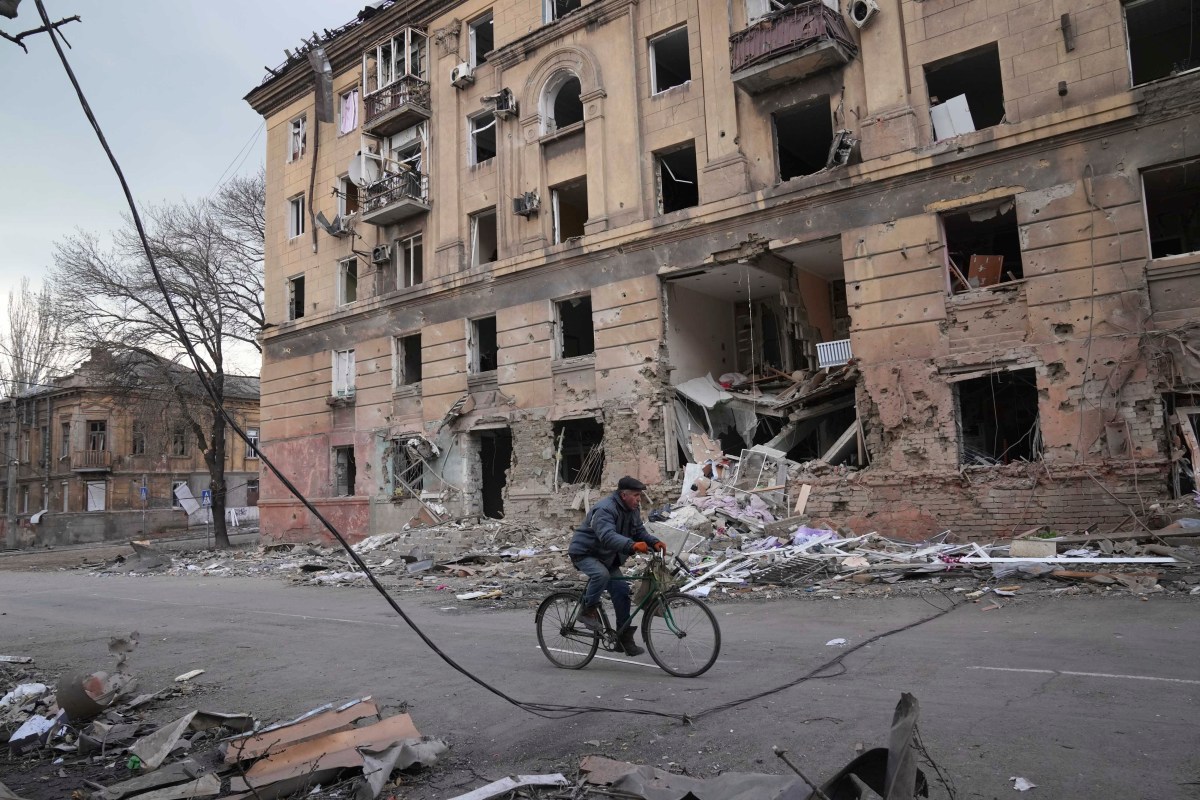What we know today, Thursday March 10
Treasurer Josh Frydenberg has declined to say whether he’s prepared to cut fuel excise to help households cope with petrol prices which have pushed past $2.20 a litre in Adelaide following Russia’s invasion of Ukraine.

Petrol prices have been around $2.19 per litre across Adelaide today. Photo: Tony Lewis/InDaily
- Govt coy on fuel excise relief as prices soar
- Judge warns of prejudice risk in Higgins trial
- New health warning as SA COVID cases spike
- School sport and activities back for classroom contacts
- Libs make mental health care pledge
- Labor sharpens focus on manufacturing and skills
- PM flags $38 billion in defence spending
- Russia bombs children’s hospital: Ukraine
Govt coy on fuel excise relief as prices soar
Treasurer Josh Frydenberg has declined to say whether he’s prepared to cut fuel excise to help households cope with petrol prices which have pushed past $2.20 a litre in Adelaide following Russia’s invasion of Ukraine.
Prices at the bowser at expected to go even higher following a spike in world oil prices to around $US130 a barrel.
Prices across metro Adelaide petrol stations were hovering between $2.19 to $2.21 a litre this morning.
“It is the expectation that oil prices will remain elevated for some time as tensions remain across Europe,” Frydenberg told the ABC on Thursday.
There is speculation the government will be forced to cut fuel excise of 44 cents a litre to help keep cost of living pressures down in the run-up to the May election.
But Frydenberg was not going to get into the “rule-in, rule-out game” just a few weeks out from the March 29 budget.
“That money goes to transport infrastructure and that is important in all our cities and all our regional towns,” he said.
Reserve Bank of Australia governor Philip Lowe has warned inflation could hit at least four per cent this year due to rising global oil and commodity prices as a result of the war in the Ukraine, and rising food prices locally due to the floods on Australia’s east coast.
But he is yet to be convinced these price pressures will remain and believes “sustainable inflation” can only be assured if wage growth accelerates to three per cent.
Current wage growth at 2.3 per cent, as measured by the wage price index, is still only where it was prior to the COVID-19 pandemic.
“There are certainly pay rises that are much larger than three per cent taking place for some jobs, but the evidence is that most working Australians are still experiencing base wage increases of no more than 2-point-something per cent,” the governor told a business conference on Wednesday.
Even so, Dr Lowe believes a rise in the cash rate from its record low 0.1 per cent is plausible later this year, which would be the first increase in over decade.
Judge warns of prejudice risk in Higgins trial
The ACT’s chief justice has warned the more the public talk about Brittany Higgins’ alleged rape, the more likely the prosecution will be halted.
Bruce Lehrmann, accused of raping former Liberal staffer Brittany Higgins in a federal minister’s office, has pleaded not guilty.
Chief Justice Lucy McCallum says those with an interest in the case risk being held in contempt of court by prejudicing a trial ahead of the jury hearing the matter in June.
“The court strongly urges anyone with an interest in these proceedings to bear those matters in mind and to be careful about the words they publish between now and the 6th of June,” she told the ACT Supreme Court on Thursday.
“To put it in blunt terms, the more people keep talking about this case the greater the risk the prosecution will be stayed.”
Chief Justice McCallum noted the offence could only be tried by a jury.
Appearing on behalf of Lehrmann, barrister John Korn raised concerns speeches made during the course of a campaign Higgins is involved in had the potential to prejudice the case.
But the barrister admitted he did not know whether a stay application would be sought, telling the court he was due to represent Lehrmann at trial but that another legal team would be handling the pre-trial matters.
Korn said the chances of a halt to proceedings “getting off the ground” were tenuous, adding “I believe the chances of a stay application being made are slim to none”.
New health warning as SA COVID cases spike
South Australia has recorded another 2560 new COVID-19 cases – the highest number since January 21 – as SA Health warns of a new infection threat from mosquitos.
SA Health on Wednesday afternoon confirmed the first cases of locally-acquired Japanese encephalitis in South Australia – a potentially fatal mosquito-borne disease that can also cause long-term neurological damage.
A recent investigation of 10 South Australians with acute encephalitis identified in the past month found four carried the Japanese variant, with three of those acquiring the infection locally.
All four South Australians with Japanese encephalitis were hospitalised, with two still in hospital. Another case of encephalitis passed away, but SA Health is still investigating the cause of death.
Symptoms of Japanese encephalitis may include confusion, headaches, neck stiffness, tremors, drowsiness and seizures.
SA Health executive director of health protection and licensing services Dr Chris Lease said Japanese encephalitis was first detected at a South Australian piggery.
He said the virus likely spread to South Australia from the flood-impacted eastern states, which have reported outbreaks in recent days and prompted the Federal Government to declare Japanese encephalitis as a disease of national significance.
“We really need people to be extra vigilant with their mosquito precautions, particularly heading into the long weekend, but also with Easter coming up,” he said.
“We do have cases from a wide range of places and that’s why we’re putting this up as statewide advice.
“There have been some trips to the regions, including the River and Murraylands, but really we can’t rule out that this is more widespread and that’s why we’re really emphasising for everyone to take precautions.”
Lease said people could get vaccinated to protect themselves from Japanese encephalitis, but there was currently short supply.
“We are looking to roll out the vaccine a little more extensively really targeting those people most at risk,” he said.
“At the moment right across Australia there’s a very high demand for it and we’re working with the Commonwealth Government around those vaccine supplies.”
SA Health has advised people to apply an insect repellent containing DEET or picaridin when outside, cover up with long, loose-fitting and light-coloured clothing, and use mosquito coils.
It comes as South Australia reported three deaths and 2560 COVID-19 cases on Wednesday – the highest number of new infections since January 21.
Two men in their 90s and a woman in her 70s who tested positive for COVID-19 passed away.
There are 90 people with COVID-19 in hospital, including 15 in intensive care and two on a ventilator.
– Stephanie Richards
School sport and activities back for classroom contacts
Children who are classroom contacts of COVID cases at school can now take part in extracurricular activities such as school sport, excursions and camps if they are symptom-free, under changes to isolation rules.
The Education Department this week sent an update to schools, telling them that “SA Health has advised that classroom contacts can attend extracurricular activities, excursions and camps if they don’t have any symptoms”.
“Teachers or students should not go on camp or participate in other extracurricular activities if they are in a classroom where SA Health has required action beyond the testing, isolating and quarantine requirements,” the update says.
Classroom contacts are allowed to attend school unless they develop symptoms and test positive but in public schools have been restricted from participating in school-based extracurricular activities.
Schools are now communicating the updated information to parents, advising them of the relaxation in rules.
The advice from the Education Department was sent to schools on Monday, although information on the department’s website states that the relaxation in rules took effect from February 28.
In a statement, SA Health said it “provides guidance and advice for early childhood, primary and secondary schools on how to best manage COVID-19 in their school community”.
“This advice was updated on Monday 7 February 2022,” the statement said.
It comes as latest data from the Education Department shows that about 4000 public school students – 2.3 per cent of the total student population – were absent on Tuesday either with the virus or isolating as a close contact.
The department said 353 teachers and 189 school services officers were away for COVID-related reasons on Tuesday.
While rules have been relaxed for after-school activities, classroom contacts are still being told to avoid OSHC for seven days, according to the Education Department’s website.
– Jemma Chapman
Libs make mental health care pledge
The Liberals say they will fund four new adult mental health centres, a 24/7 urgent mental health centre in Mount Barker and a new Headspace site for youth mental health if re-elected at this month’s state election.
The package, delivered in conjunction with the federal government, will also see the creation of an Aboriginal Mental Health and Wellbeing Centre.
The Liberals say the mental health program represents a “total additional investment” of $134 million between the state and federal governments, although the costs were budgeted before the caretaker period and are part of the $500 million health spending pledge they revealed two weeks ago.
The centrepiece of the package is a $128 million mental health funding agreement over five years with the federal government.
The State Government will put $61.8 million towards the joint agreement over five years while the Commonwealth will kick in $66.1 million.
The four new adult mental health centres would be located in Northern Adelaide, Mount Barker and two satellite locations, while the new 24/7 urgent mental health facility in Mount Barker will add four overnight ‘chairs’ to the system.
The new Headspace site, a youth mental health service for people aged 12 to 25, will add to the 13 already in place across the state.
The Commonwealth will also fund two adult mental health care “satellites” in the southern and western suburbs to provide more out of hospital care for mental health patients.
South Australia’s struggling mental health services have been a key election issue, with Labor kicking off its election campaign two weeks ago with a pledge to put $182 million towards 98 new mental health beds.
This would include 72 across the metro hospital network, six in Mount Gambier and 20 mental health community hospital in the home beds.
Labor sharpens focus on manufacturing and skills
Labor is pledging to spend $4 million on a new “Manufacturing Growth Accelerator” program in the Tonsley Innovation District to prepare South Australia’s workers for the naval shipbuilding program.
The program, which will bring companies, researchers and students together to focus on “innovative applications” of manufacturing technology, will be based at Flinders University’s Factory of the Future facility.
Labor says the program and its focus on developing manufacturing capabilities will help put companies “at the front of the queue” for future work.
Opposition leader Peter Malinauskas said the funding would also help ensure South Australian workers participate in the lucrative submarine program.
“SA businesses and workers will need the specialist skills necessary to undertake the complex tasks required for building submarines, space craft and other hi-tech manufacturing programs,” he said.
“That is why I’m proud to announce this investment in the future of SA’s manufacturing sector. A Labor Government will work to ensure we create new jobs, but also keep jobs here in SA.”
Flinders University will contribute a further $2 million to the program. Pro Vice-Chancellor (Research Impact) Professor John Spoehr welcomed Labor’s funding commitment.
‘The Factory of the Future is focused on leveraging opportunities for companies linked to the multi-billion dollar continuous naval shipbuilding program,” he said.
“The new program will enable companies to test their products and systems for potential application in shipbuilding and adjacent sectors.
“The announcement demonstrates strong bipartisan commitment to manufacturing innovation in South Australia.”
PM flags $38 billion in defence spending
Australia’s defence workforce will be boosted to more than 100,000 people under a new plan announced by the prime minister and defence minister.
The expansion – first flagged as part of a 2020 defence force structure plan – is slated to grow the defence workforce by around 18,500 people by 2040.
The growth is estimated to come at a cost of at least $38 billion between 2024 and 2040.
Prime Minister Scott Morrison says the increase will result in almost 80,000 permanent Australian Defence Force personnel – a 30 per cent increase – and a total permanent workforce of more than 101,000 by 2040.
“Our world is becoming increasingly uncertain so it’s important we take steps now to protect our people and our national interest over the coming decades,” Morrison said.
“You can’t flick a switch to increase your army, navy and air force overnight. Growing the type of people and skills we need to face the threats of the future takes time, so we must start now so critical skills can be taught and experience gained.”
The federal government has also committed to increasing the defence workforce by around 800 ADF personnel, 250 public servants and additional Australian Signals Directorate employees by 2024.
Capabilities associated with the trilateral AUKUS security partnership with the United Kingdom and United States will become a focus for the expansion.
This includes “warfighting capabilities” in the domains of space and information and cyber, Defence Minister Peter Dutton said.
Russia bombs children’s hospital: Ukraine

This image from video provided by the Mariupol City Council shows the aftermath of Mariupol Hospital after an attack on Wednesday March 9, 2022.
Russia has been accused of bombing a children’s hospital in the besieged Ukrainian port of Mariupol during a supposed ceasefire to enable some of the hundreds of thousands of residents to escape.
Russia, which denies targeting civilians, said it would hold fire to let civilians flee Mariupol and other besieged cities on Wednesday.

A man rides a bicycle in front of a damaged by shelling apartment building in Mariupol, Ukraine, Wednesday, March 9, 2022. Photo: Evgeniy Maloetka/AP
But the city council said the hospital had been hit more than once.
“The Russian occupying forces have dropped several bombs on the children’s hospital. The destruction is colossal,” the city council said in an online post.
Regional governor Pavlo Kyrylenko said 17 people were wounded in the attack, including women in labour.
Ukrainian President Volodymr Zelenskiy called it an atrocity.
“Direct strike of Russian troops at the maternity hospital. People, children are under the wreckage,” he said on Twitter.
Kremlin spokesman Dmitry Peskov, asked to comment on the reported bombing, said: “Russian forces do not fire on civilian targets.”
The Ukrainian Foreign Ministry posted video footage of what appeared to be the badly damaged building of what it said was the children’s and maternity hospital.
The footage showed holes where windows should have been in a three-storey building at the hospital, and huge piles of rubble, some of it smouldering.
– With AAP and Reuters




